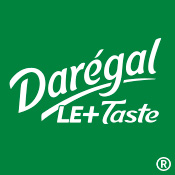-
Darégal Celebrates 130 Years
- November 2017
A different point of view on 130 years, take to the air!
Un autre point de vue sur 130 ans, envolez-vous !
Ein anderer Blickwinkel auf 130 Jahre, machen Sie sich mit auf!
We tried to sum up 130 years of listening to nature in just 130 lines. However, this rich history of individuals with a passion for taste got the better of our original intention. Instead, the following is a collection of key dates from this extraordinary family saga.
In the Darbonne family, the passion for culinary herbs is passed down from generation to generation. Following on from Amand, André, Marc, and Luc, it is now the turn of Charles to affirm his family’s drive and determination to excel, as well as its spirit of humanity and innovation. The company is continually launching new taste creations, daring to try new aromatic challenges and investing in cutting-edge technology.
A look back over five chapters of an ever-evolving story
Chapter 1: Amand Darbonne’s generation
1887: Amand buys Le Prieuré, a farm located in Milly-La-Forêt, France’s capital of medicinal plants.
1889: Wanting to offer the highest quality in medicinal plants, Amand creates the very first rack dryer, which was to form the basis for the dehydration technique. Up until then, herbs had been dried in bunches, so this technique of drying them on several trays in the open air revolutionises the market.
Chapter 2: André Darbonne’s generation
1920: André establishes the medicinal plant professional association in France.
1924: From a trip to England, André brings back a variety of peppermint called Mitcham. Even today, Milly-la-Forêt is famous for this mint. Also during this period, with a revolution going on in agriculture, Darégal imports the first tractors directly from the United States.
Chapter 3: Marc Darbonne’s generation
1948: Back from the war, André hands over the reins to his son Marc who forms the “Conservatoire des Plantes Médicinales” botanical garden in Milly-La-Forêt.
1954: On the basis of their proven expertise in growing, harvesting and drying medicinal plants, Marc develops the production of culinary herbs.
1954: Marc constructs the first dehydration oven (a helical tower of trays with mechanical processing of leaves). Tarragon, parsley, watercress, chervil and chives are the first culinary herbs to be dehydrated.
1966: Marc designs a new dehydration tool, building a steam-heated oven featuring a 20m long belt. It is the largest dehydration oven in Europe at the time.
Chapter 4: Luc Darbonne’s generation
1981: Luc and his brother Hubert jointly take control over the company before restructuring it according to market area. Luc keeps charge of the dehydrated and frozen culinary herb business.
1993: Darégal’s meeting with Armanino Farms leads to a joint venture which becomes Supherb Farms. A factory is built in Turlock, California (USA) to specialise in frozen culinary herbs.
1998: The first production line for packaging culinary herbs into small boxes launches. The little box design still in use today dates back to this innovation.
2001: The company acquires its competitor Gyma and becomes the market leader.
2002: Launch of “liquid culinary herbs” that can be incorporated into specific processes, such as for fromage frais.
2009: Building of a production unit in Santaella, Spain: Darégal Iberica, today the global leader in basil production.
2011: Launch of culinary herb “infused oils” for prepared salads, ready meals and tinned foods.
Chapter 5: Charles Darbonne’s generation
2013: Charles takes over as managing director and imparts his innovative ambitions by launching frozen infusions, broths and fish stocks. He also launches a programme to identify and develop terms to describe the visual, olfactory and taste characteristics of culinary herbs. He establishes a panel of taste experts, the “Darégal Herb Sommeliers”, and launches a centre of expertise in culinary herbs, combining the “Taste Pépinière” where varietal aspects are studied, and the “Chez la Serre” space where culinary advances are developed.
2014: Launch of Cool’Eaze, a range of culinary herb coulis for the food service industry, developed in collaboration with a Chef who holds three Michelin stars, Christian Le Squer.
2016: Inauguration of a new factory dedicated to liquid ranges – sauces, seasonings, coulis, and infused oils – inspired by the aromatic intensity of our outdoor cultivation.
2017: Continuing our success with the food service industry, we launch culinary herb coulis exclusively in Picard stores. Long live the Crayons de Coulis!
Inspired by 130 years of success, Charles opens this new chapter with a unique savoir-faire acquired through the generations.

